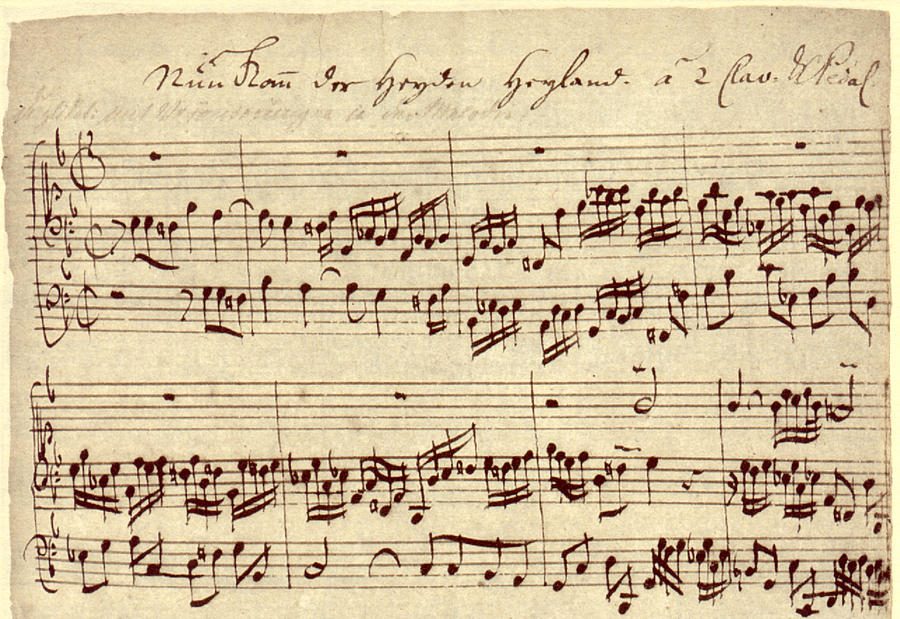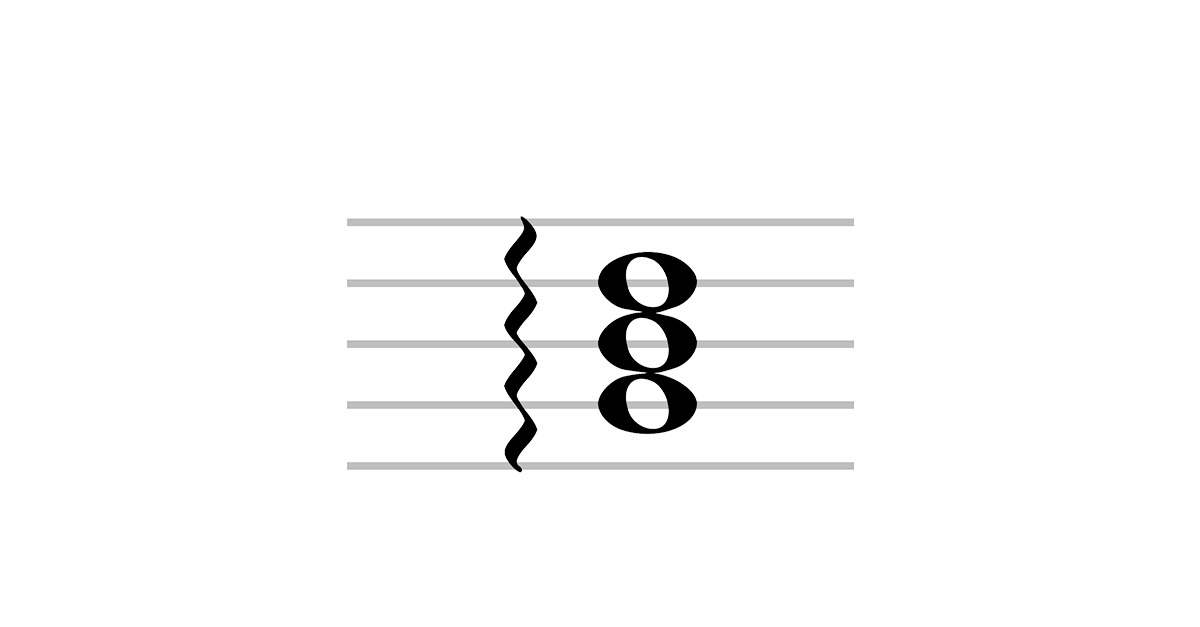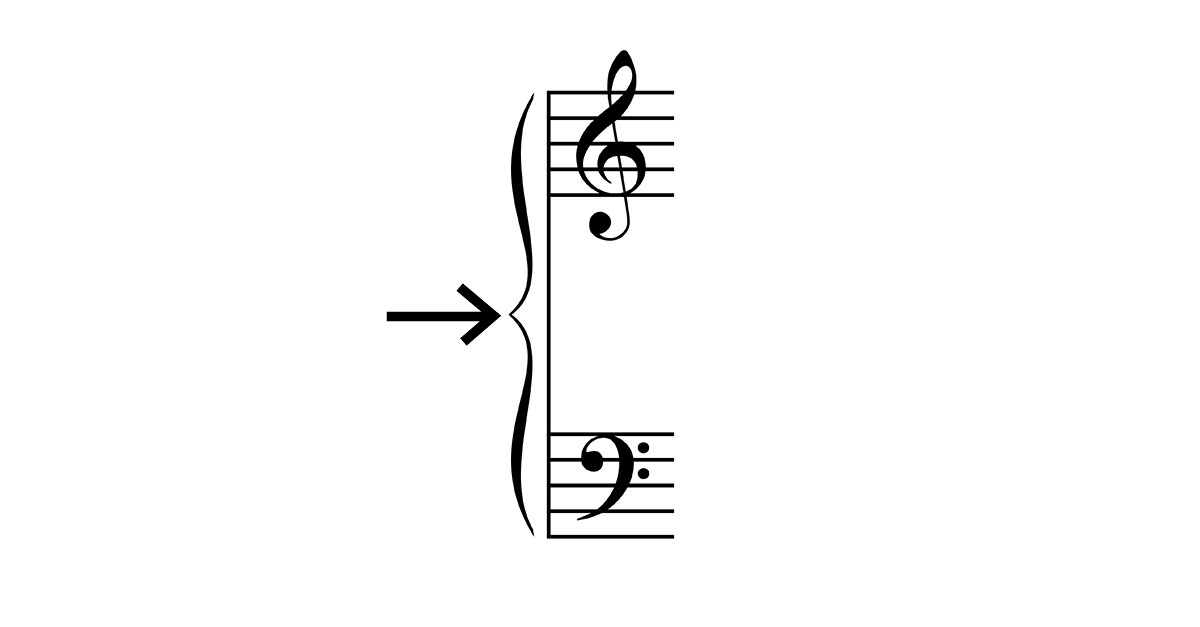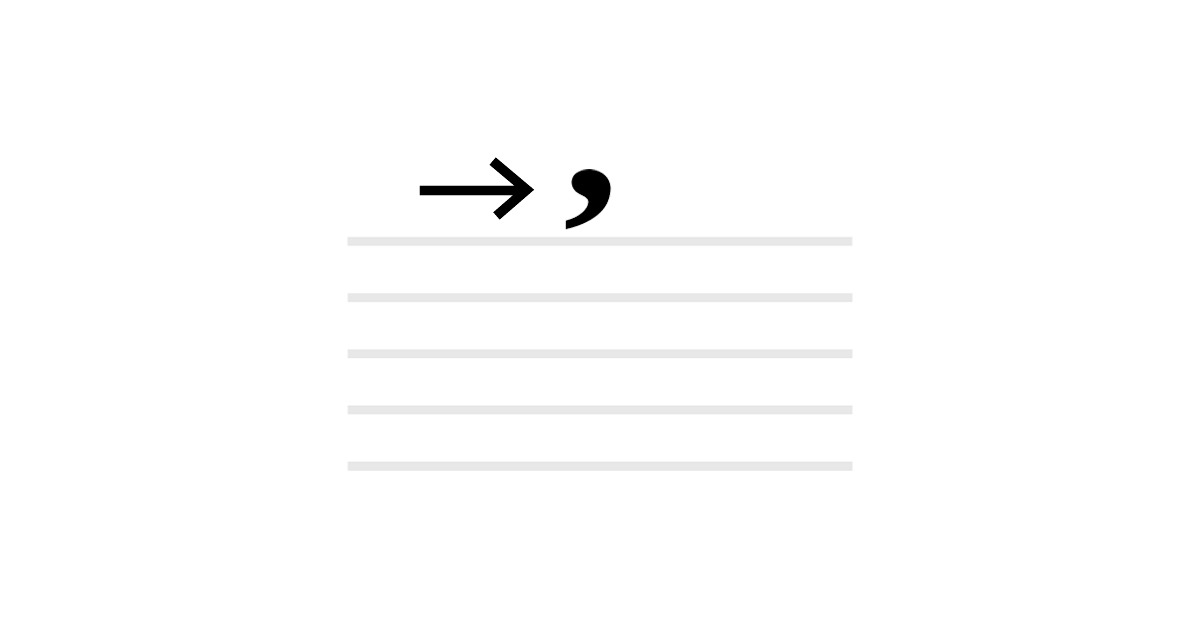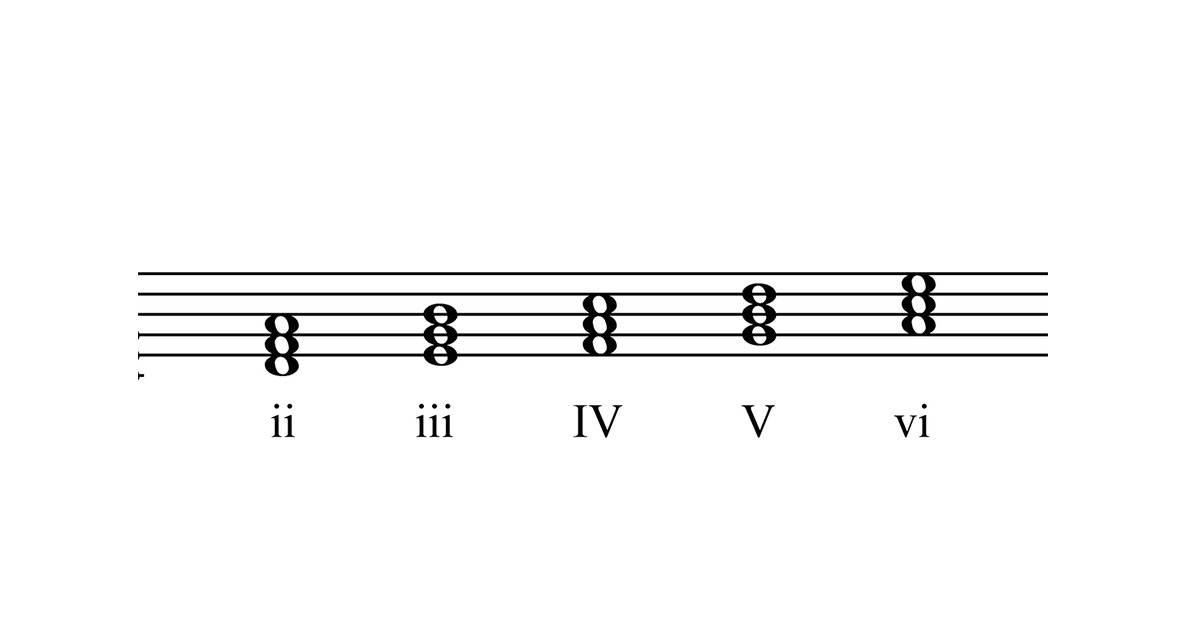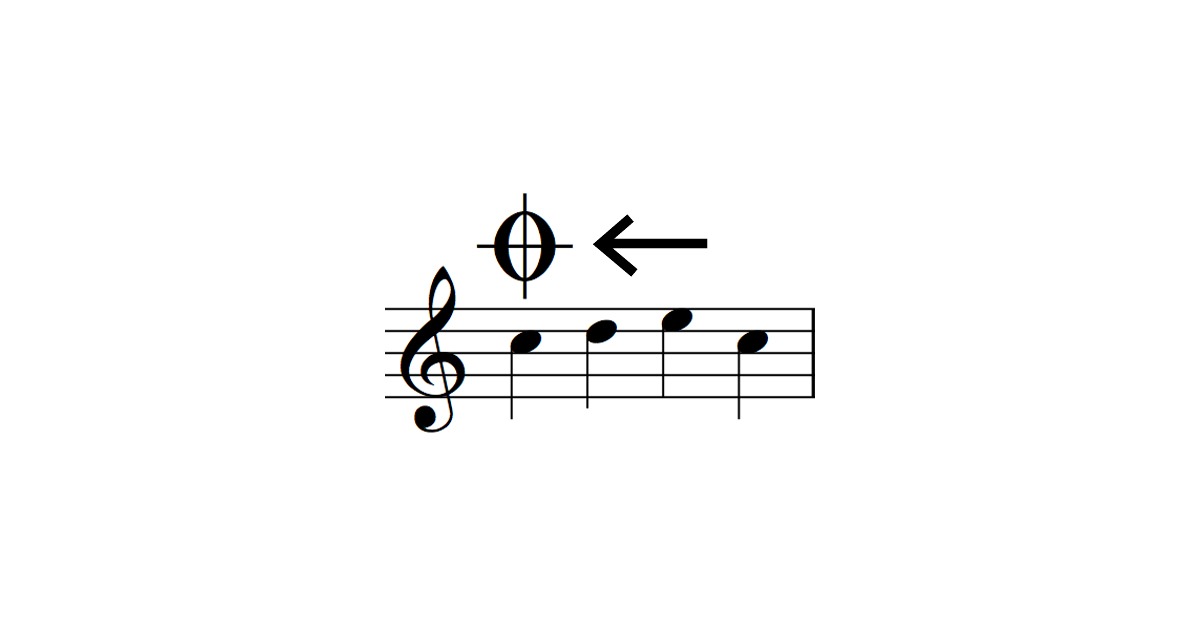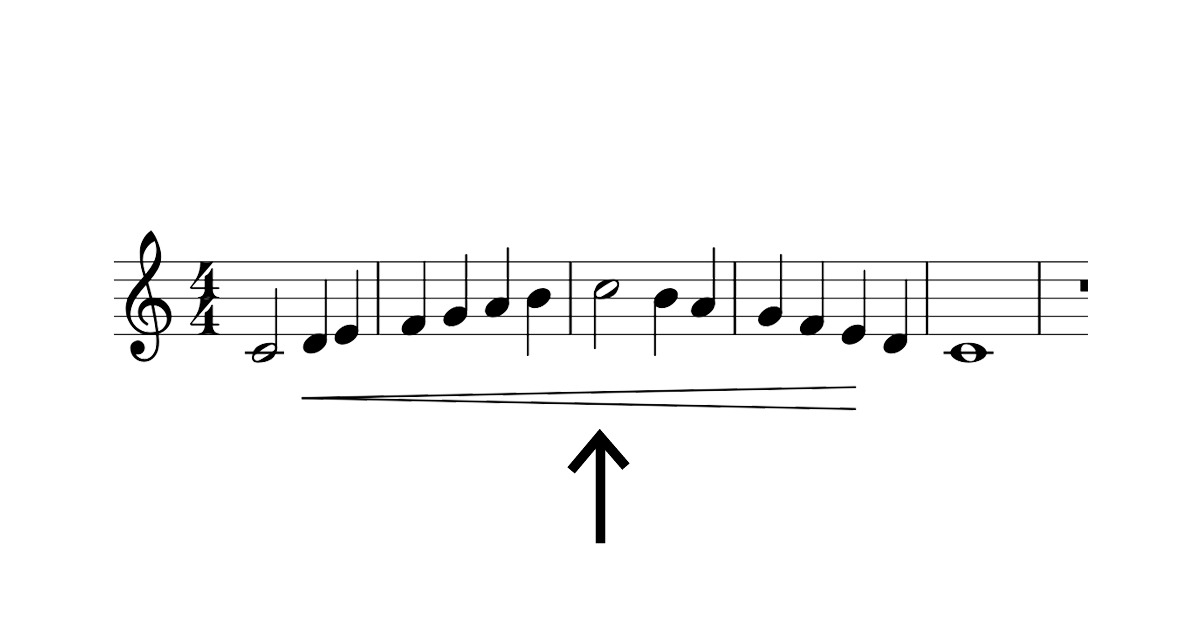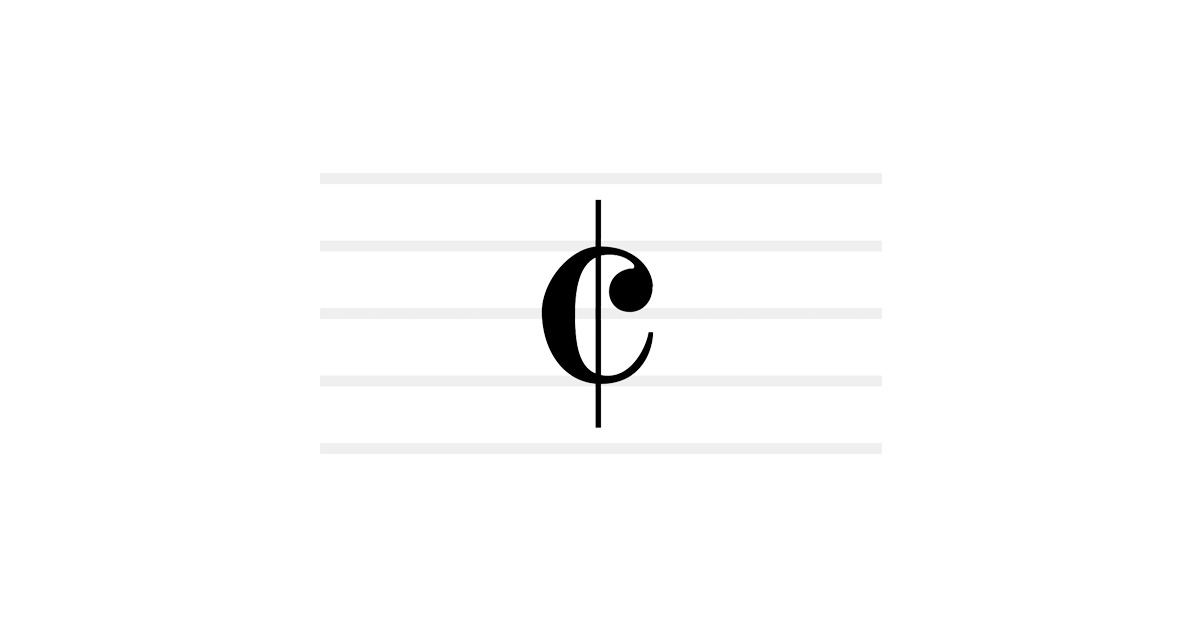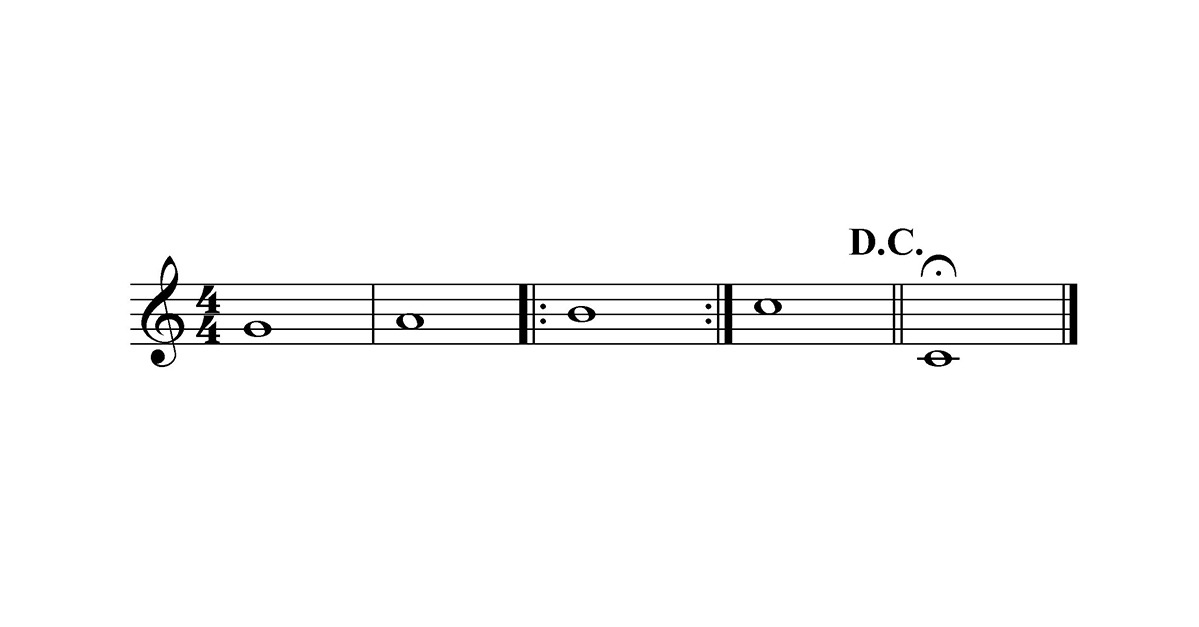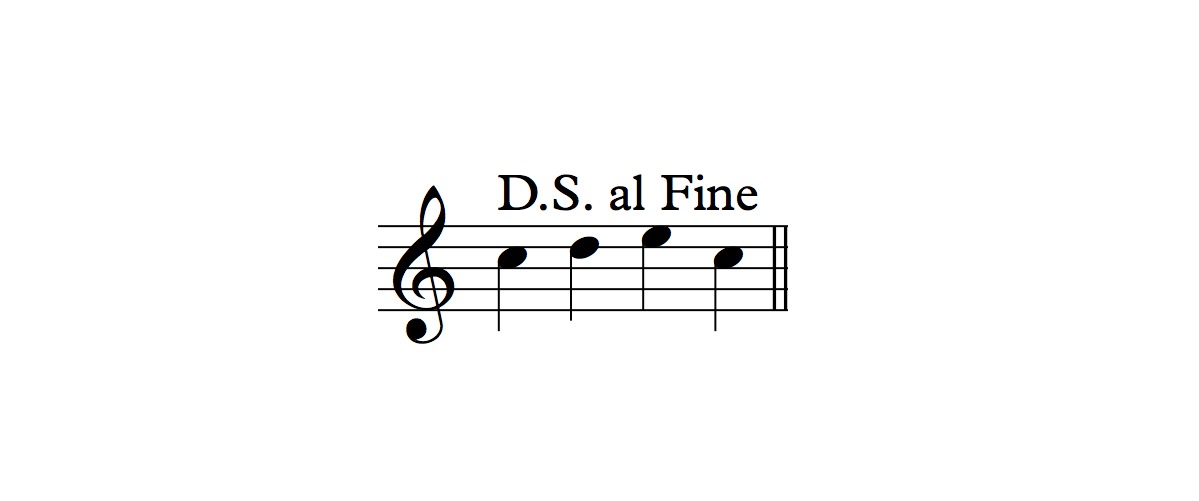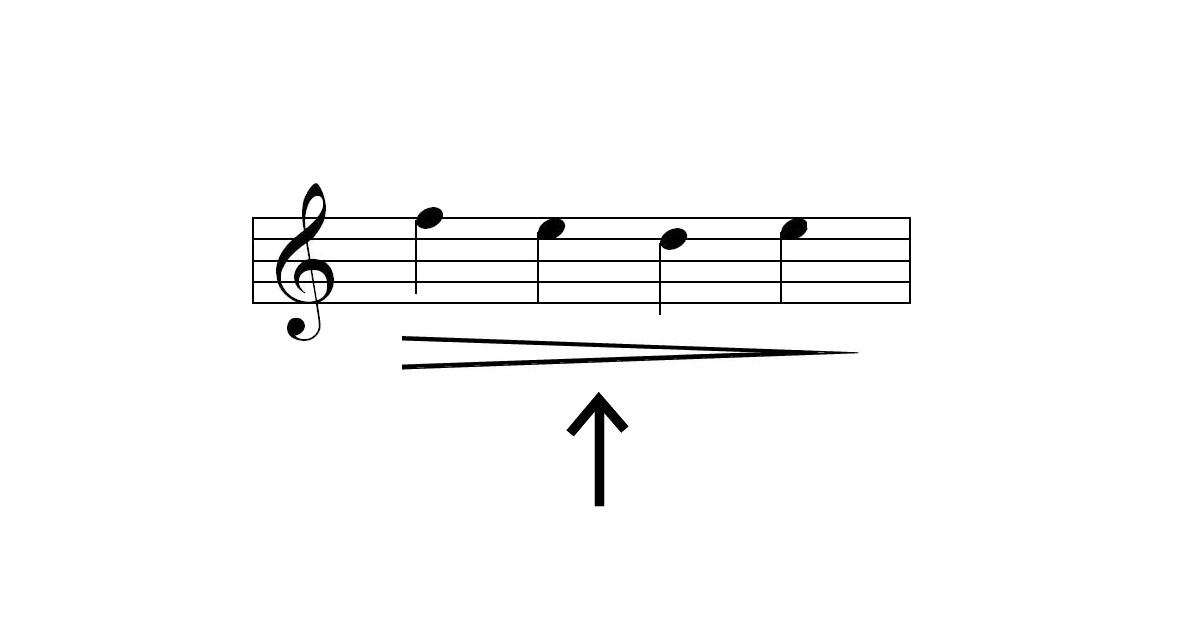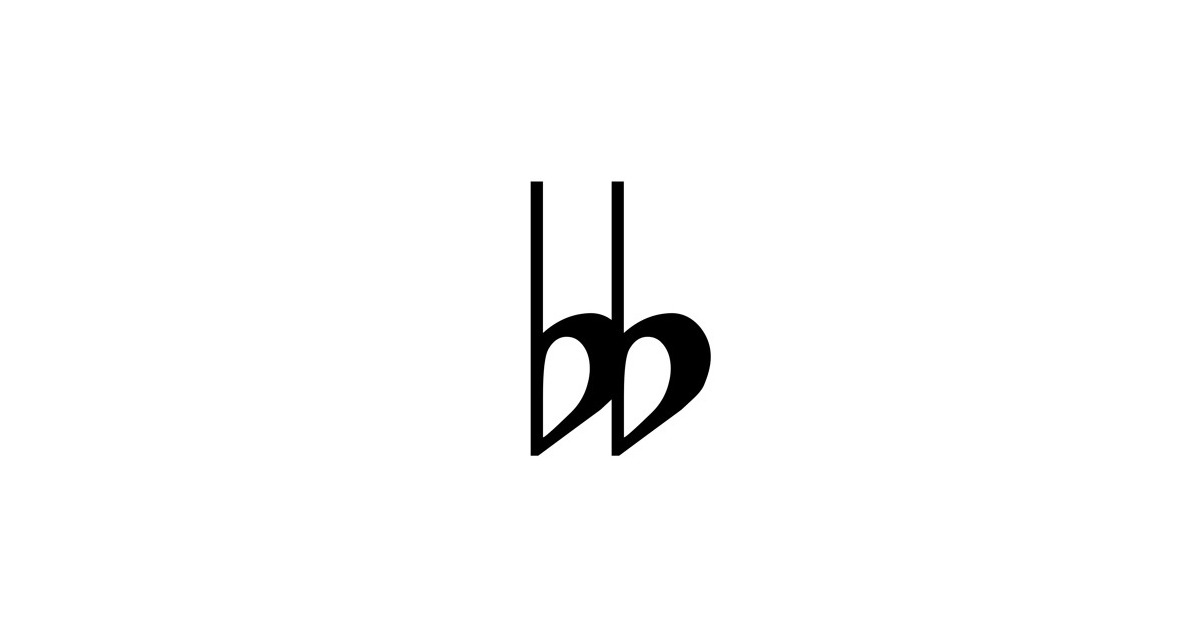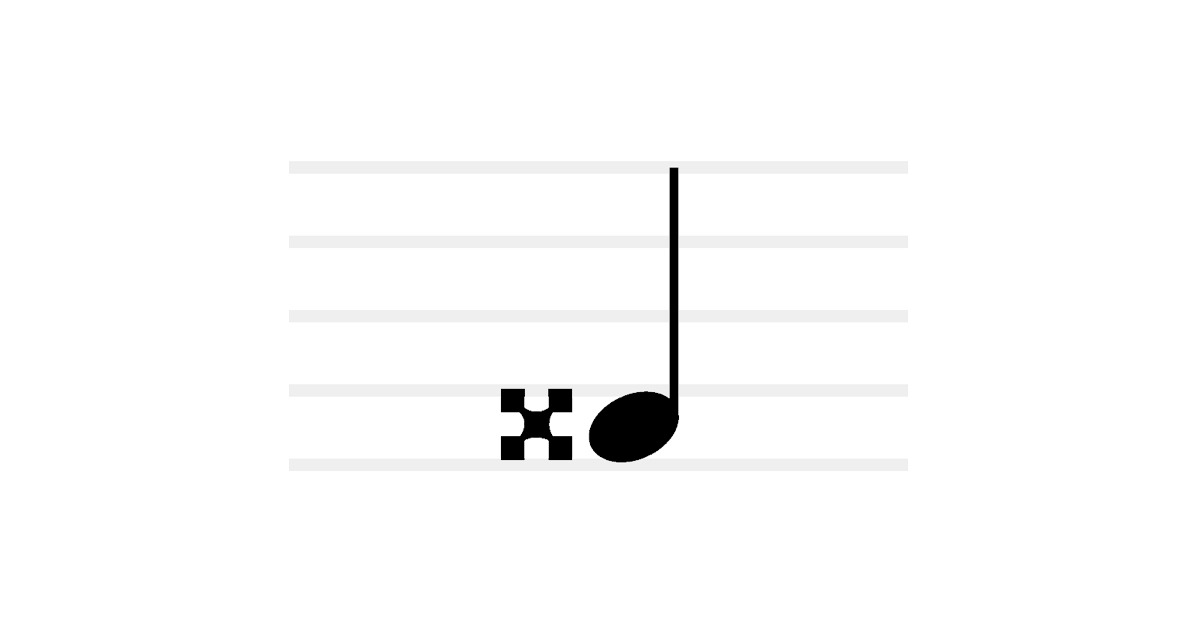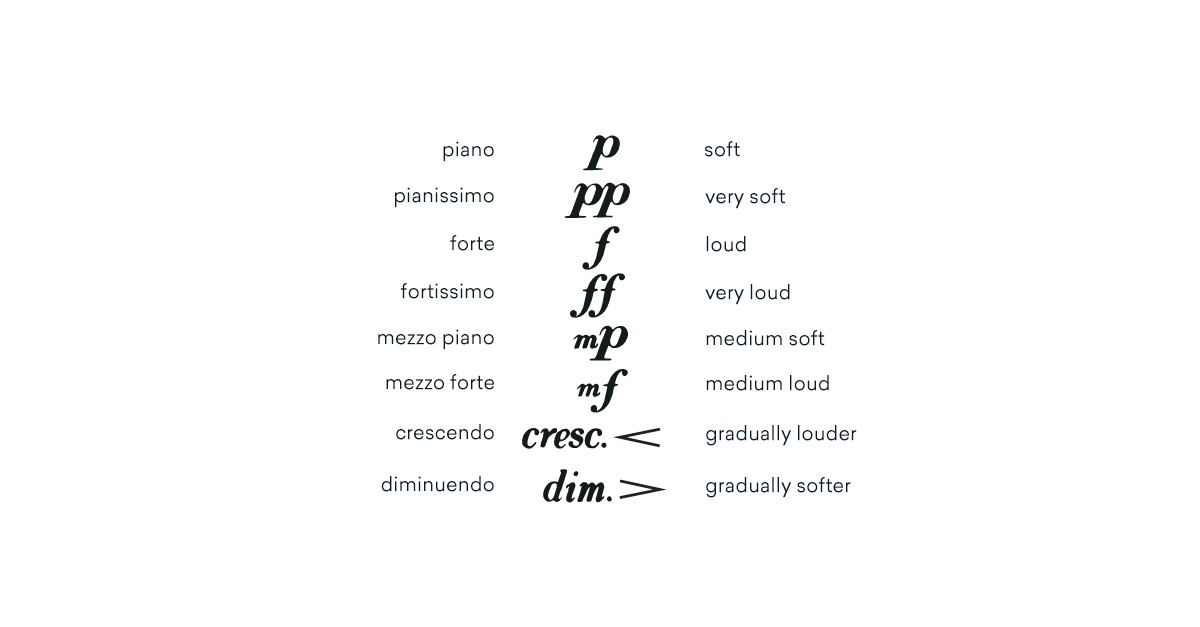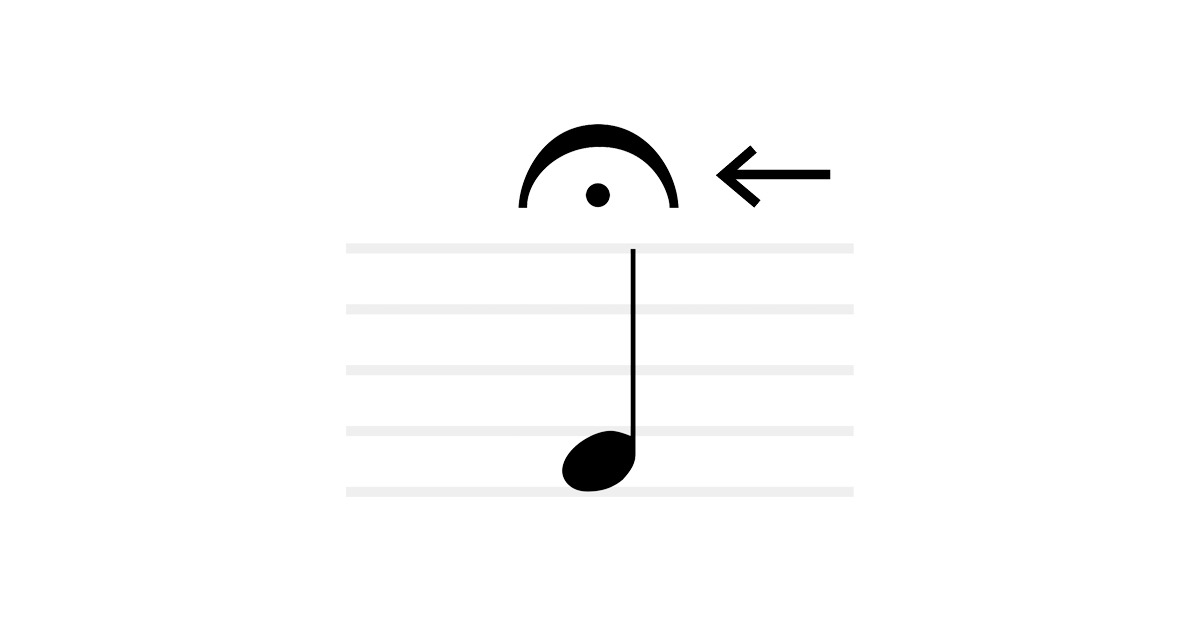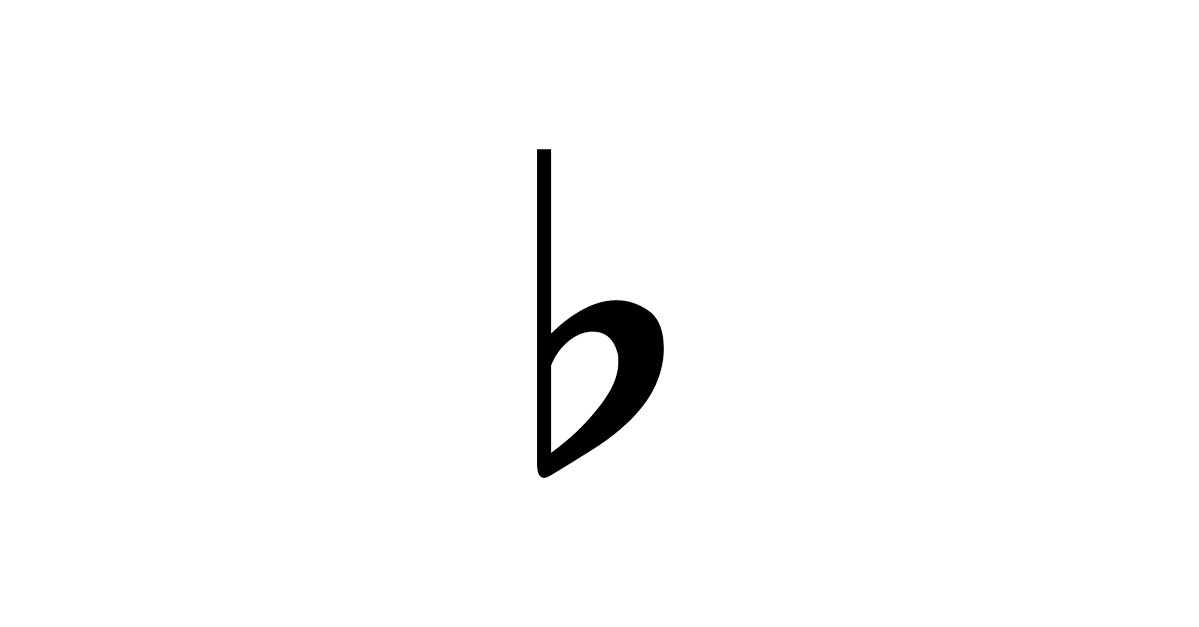In sheet music, music symbols describe the way we play a particular piece of music.
That’s why sheet music is still so necessary for communicating how to play a piece of music.
However, written music uses a lot of different symbols to describe what to play exactly and it can be confusing to know what each symbol means.
That’s the reason why we’ve put together a master list of music symbols you need to know to read sheet music.
Let’s learn the 50 most important music symbols!
1. Accent
The accent is a sideways V found on the top or bottom of the note’s head.
It indicates that we should play the specific note at an increased dynamic over the other notes in the bar.
2. Arpeggio
The arpeggio symbol indicates to the player that we should play the notes in the chord independently and in a sweeping motion similar to the way we play an arpeggio.
3. Bars
A bar or measure in sheet music is symbolized by vertical lines on the staff. They write the notes of a specific measure between each vertical bar.
4. Brace
The brace symbol indicates that two clefs on a musical staff are linked and they should play them together.
It helps to build visually connect between the bass and treble clef in piano music.
5. Breath Mark
Breath marks are comma like they use symbol between notes to mark where wind players and choir singers may take a breath between passages.
6. Chord Numerals
In sheet music, you’ll often see roman numerals denoting the chord’s position within the key of a piece of music.
7. Clef
The clef is a symbol that is at the beginning of every piece of sheet music. It indicates the note value of each line on the staff.
There are many clefs in music but the two most common are the treble and bass clef.
These clefs same as the G-clef and F-clef because they both indicate where G in the treble clef and F in the bass clef are found respectively.
Choral music also makes use of different C-clefs for soprano, alto, tenor and baritone to indicate where middle C is on the staff.
8. Coda
The coda has responsibility as a reference point in a piece of music.
For example, when we see the instruction “to coda”, the player should continue playing from where they put the coda symbol on the sheet.
The coda is denoted by a circle with a cross through it.
9. Common Time
The common time is 4/4 time. It’s denoted by a C symbol where the time signature is found. It’s just another way of instructing the player to play 4/4 time.
10. Crescendo
A crescendo indicates an increase in dynamic (or loudness) during a piece of music. As the shape opens up the player should increase their volume.
11. Cut Time
Similar to common time, cut time is another way of writing 2/2 time in the time signature section of a piece of sheet music.
It’s denoted by a C symbol with a bar through it.
12. Da Capo
“Da Capo” is an instruction that is on a piece of sheet music to restart playing the piece from the very beginning.
Its shape is usually the initials D.C. if it’s not expressly written.
13. Dal Segno
Similar to Dal Capo, Dal Segno instructs the player to resume playing from a sign symbol found elsewhere in the piece.
They usually write it as the initials D.S. if it’s not expressly written.
14. Damp
The instruction to damp is symbolized by a circle with an X through it.
For example, they will give the instruction to a timpani player when they mute a drum.
15. Damp All
Similar to Damp, the Damp All symbol instructs a player to damp every part of the instrument that’s ringing at a specific moment.
It has a shape of two circles with a cross through it.
16. Decrescendo
The symbol for decrescendo is the opposite of crescendo. It indicates to the player a gradual reduction in dynamic over a series of notes.
17. Double Flat
A double flat symbol indicates that we will play a note two steps down. Its shape is two flat symbols together.
18. Double Sharp
Similar to the double flat, the double sharp refers to a note that we will play two semitones up from its natural state.
19. Dynamic Notation
Dynamics are notated in music with the letters p for piano, m for mezzo and f for forte.
Piano means a quieter dynamic than mezzo piano and forte means to play with a louder dynamic that than mezzo forte.
20. Fermata
Fermata is a music symbol which indicates that we should hold a note until it gets a cue from the conductor to continue playing.
21. Flat
A flat note is a note that we play one semitone below its natural state.
22. Fortepiano
The fortepiano music symbol tells the player to abruptly shift from a loud dynamic to a quiet dynamic.
23. G-clef Ottava Alta
An ottava alta g-clef indicates that we will play all notes on the staff one octave higher.
24. G-clef Ottava Bassa
An ottava bassa g-clef indicates that we will play all notes on the staff one octave lower.
25. Glissando
A glissando symbol instructs the player to slide in pitch up and down from note to note.

